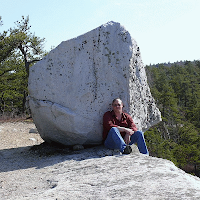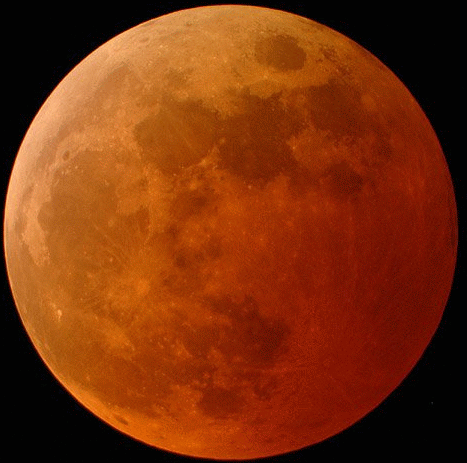How on earth did it get that name? It's certainly not something the local Chamber of Commerce would choose. Well, it apparently was named when a former hunting preserve around the lake was purchased in 1955 by an outfit called Nuclear Development Associates.
New York Times - February 18, 1955
The federal Atomic Energy Commission sponsored work there from 1958 through 1972 by a research facility owned by the United Nuclear Corporation. They were working on the development of plutonium fuel for breeder reactors.
Why did they stop in 1972? Turns out there there was a little accident. A chemical explosion in the laboratory blew out two windows on the north side of the building spraying out an unknown amount of plutonium. After a two-year, three million dollar cleanup, the federal government bought the property for $900,000 in 1979 and declared it fit for unrestricted use.
Today, the Appalachian Trail runs right next to the lake.
The following, from Hike the Hudson Valley, has an amusing take on it all...
I know what you’re thinking. Why would I ever want to visit a place called Nuclear Lake? Well, let me set your mind at ease. The only reason it’s even called Nuclear Lake (you’re going to think this is so funny when you hear it), is that in 1972, a chemical explosion blew out two windows in the experimental nuclear research lab that used to sit on the shore of the lake, blasting an unspecified amount of bomb-grade plutonium across the lake and surrounding woods.To make it even more irresistible, the website also states that Nuclear Lake is the most beautiful lake on the entire 2,200 miles Appalachian Trail - high praise indeed.
See? I bet you thought it was something bad.
Okay, so maybe it doesn't sound that fantastic. But the trails around the lake were extensively tested, cleaned and declared safe many years ago, and who am I to argue with all those Geiger counters? I’m sure they dumped plenty of kitty litter and sawdust on top of that plutonium. To visit the place, you’d never know anything untoward had happened at all.
How can you resist that? So today I went for a hike there. From Route 55, it's a relatively easy walk of a little over 4 miles round trip with a little up and down but, no real challenges. The Hike the Hudson Valley web site has a great (and accurate) trail description for the loop around the lake.
The walk in was nice, typical terrain for the Hudson Highlands with outcrops of gneiss rock (get the geology pun?) and not much in the way of interesting plant or animal life this time of year (mid-December) other than a few ducks on the lake and squirrels in the woods.
Banded gneiss
Not so green wintergreen underfoot
There's also a cleared area next to the lake which looks to be the site of the old research facility. Nothing there anymore.
At the east end of the berm is a small stream draining the lake. But across the lake's outlet is a boom.
So here's my question... If the site was cleaned up 40 years ago, and declared OK for unrestricted use, and nothing exists around the lake anymore, why the hell is there a boom here? What is it supposed to be catching off this "pristine" lake in the woods? Strange.
It gets even stranger here. No, not this growing tree, although it was odd too. Just wait.
The lake, as advertised, is quite beautiful with a very nice trail looping around it. I definitely want to return in summer when everything is green (although not sure if I'd swim in this lake).
View from the south end of the lake
View from the north end of the lake
The best thing about the lake is that it's a mile walk in from the road so that keeps out much of the riff raff. I had the entire place to myself - not a soul in sight. I'm sure summer would be a different story, however.
Now for some more strangeness. At the north end of the lake, there are a bunch of stone walls in the woods. Not normal stone walls like I'm familiar with - the straight walls that once lined farmer's fields but now lie in the woods as some hardscrabble farms were abandoned a century ago. No, these stone walls ran up and down hills in curved paths. Not marking farmer's fields either since no one could farm anything on the steep, stony hillsides around this part of the lake.
A curvy stone wall running to the lakeshore
Another zig-zagging wall
Who the hell builds a rock wall that zig-zags up the hill? It's certainly not marking anyone's property line. Another ran parallel the shoreline. Why do that?
Is there a point to this?
One area had a wall encircling an artificial hill of stone. It looked like a ritual space to me.
Wall went around this mound
Another wall enclosed a rectangular area but was too sloppy to be a building foundation.
Not a foundation - Again, what's the point?
Very strange. Who built all of these stone walls (there were a lot of them!) that are running willy-nilly all over the place and why?
Here's another strange thing I've never seen before. On the trail by the stone walls was an eviscerated bird - headless and gutless (not sure what the bird was, but I assume killed by a raptor).
So, of course, being the type of person I am, at the furthest end of the lake, the place with the odd stone walls and eviscerated bird, I picked up a dead stick and struck a fallen log three times - thump, thump, thump. Nothing. No squatches in the area, or so I think. But 10 minutes later, when I was sitting down on a flat rock on the shore of the lake (hand over my heart and swear to god), I distinctly heard two thumps. Then two thumps again. Then, a few minutes later, a weird yowling scream (it kind of sounded like a domestic tom cat but there are no houses within a few miles of this lake). The ducks in the lake didn't like it either since they started up a loud quacking in response. Here I am sitting all alone in the woods, not quite helpless but feeling pretty exposed, two miles from the road, feeling chills up my spine. Cue spooky music.
No, I don't believe in sasquatch, but I have no idea where the thumps came from (sounded like something banging a log just as I did - another squatch caller?). The yowl may have been a coyote or maybe a bobcat, I have no idea but it was real and spooky.
All in all, an excellent hike (but bring a hiking buddy if you're easily spooked!).


























































